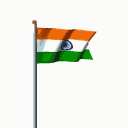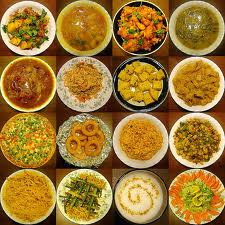AMAZING COUNTRIES


| Food in Russia |
|
Indian food is different from rest of the world not only in taste but also in cooking methods. It reflects a perfect blend of various cultures and ages. Just like Indian culture, food in India has also been influenced by various civilizations, which have contributed their share in its overall development and the present form.
|
|||||||||||
NORTH INDIAN CUISINE
|
SOUTH INDIAN CUISINE |
|||||||||||
Food from North India is characterised by its thick, tasty gravies. North Indians love chillies, saffron, milk, yoghurt, cottage cheese, ghee (clarified butter)and nuts. Their meals are hearty and often include several dishes. Sweets are a huge favourite too. The samosa is a popular North Indian snack, chaat, kachori, imarti, several types of pickles, Paneer Kofta - Koftas of homemade creamy cheese ground with vegetables, mixed with nuts & raisins, deep-fried, served in a creamy sauce. |
The southern part of India is famous for its various spices and also spicy foods. Its long past has witnessed the export of spices to many countries. Even the outsiders, generally the foreign invaders like the Dutch, the French and the English, who kept coming here over generations, are reported to be fond of these spices. Some of the chief varieties of spices produced here include cardamom, pepper, cinnamon, cloves and nutmeg. The south India is equally famous for the availability of coconut, a wide variety of fishes and root tubers. The south Indian food is mainly rice, which the south Indian people love to have with a combination of Sambhar or curry. |
|||||||||||
EAST INDIAN CUISINE
|
WEST INDIAN CUISINE |
|||||||||||
East Indian Dishes are mainly served with either boiled rice or with aps (bhakri). Rice is at times presented in a variety of preparations called pullaos or arros. For feastive occasions this is substitued by fugyas, wadds, polias, chatiaps and sannas. In curries, Bombay Duck or Bobil is a great favourite. |
This region probably has the most diverse styles of food in India. Rajasthani food is spicy and largely vegetarian but includes many delicious meat dishes like Laal Maas (red meat curry) while Gujarat’s cuisine is known for its slight sweet touch (at least a pinch of sugar is added to most dishes!) and is traditionally entirely vegetarian. Thaali (a large plate) is the Gujarati style of eating and a meal can consist of as many as 10 different vegetable dishes, rice, chapati (Indian bread) and sweets! The Gujaratis love a snack and cook a huge variety of them. These are collectively known as Farsan. |
|||||||||||




